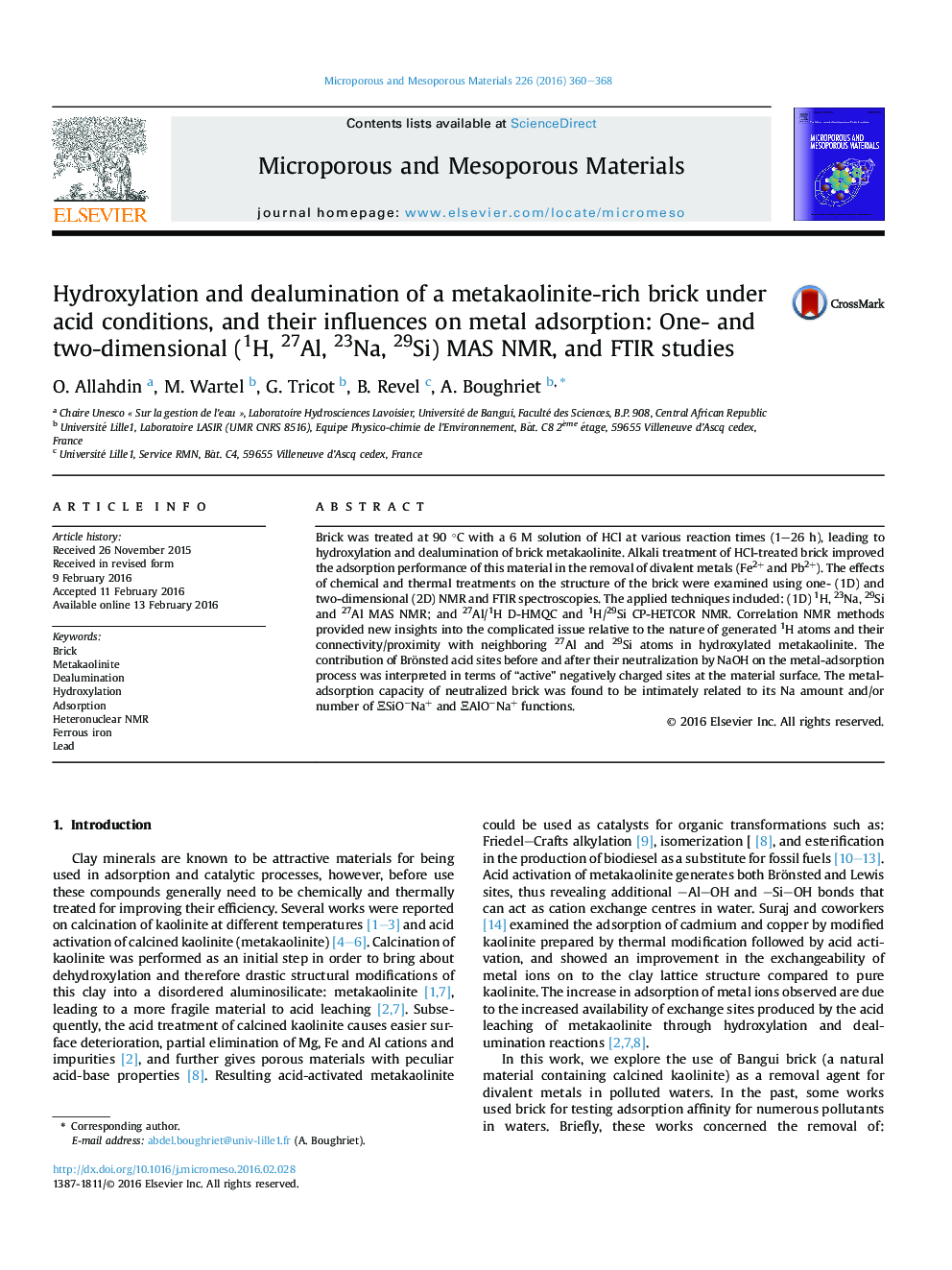| Article ID | Journal | Published Year | Pages | File Type |
|---|---|---|---|---|
| 72206 | Microporous and Mesoporous Materials | 2016 | 9 Pages |
•Acid activation of brick – metakaolinite led to hydroxylation and dealumination.•A following NaOH neutralization induced changes in the electric balance.•1D/2D solid-state NMR and FTIR techniques were employed to investigate structural modifications.•1H atoms connectivity/proximity with neighboring 27Al and 29Si sites were examined.•Modified brick showed good uptake properties for metal cations.
Brick was treated at 90 °C with a 6 M solution of HCl at various reaction times (1–26 h), leading to hydroxylation and dealumination of brick metakaolinite. Alkali treatment of HCl-treated brick improved the adsorption performance of this material in the removal of divalent metals (Fe2+ and Pb2+). The effects of chemical and thermal treatments on the structure of the brick were examined using one- (1D) and two-dimensional (2D) NMR and FTIR spectroscopies. The applied techniques included: (1D) 1H, 23Na, 29Si and 27Al MAS NMR; and 27Al/1H D-HMQC and 1H/29Si CP-HETCOR NMR. Correlation NMR methods provided new insights into the complicated issue relative to the nature of generated 1H atoms and their connectivity/proximity with neighboring 27Al and 29Si atoms in hydroxylated metakaolinite. The contribution of Brönsted acid sites before and after their neutralization by NaOH on the metal-adsorption process was interpreted in terms of “active” negatively charged sites at the material surface. The metal-adsorption capacity of neutralized brick was found to be intimately related to its Na amount and/or number of ΞSiO−Na+ and ΞAlO−Na+ functions.
Graphical abstractFigure optionsDownload full-size imageDownload as PowerPoint slide
